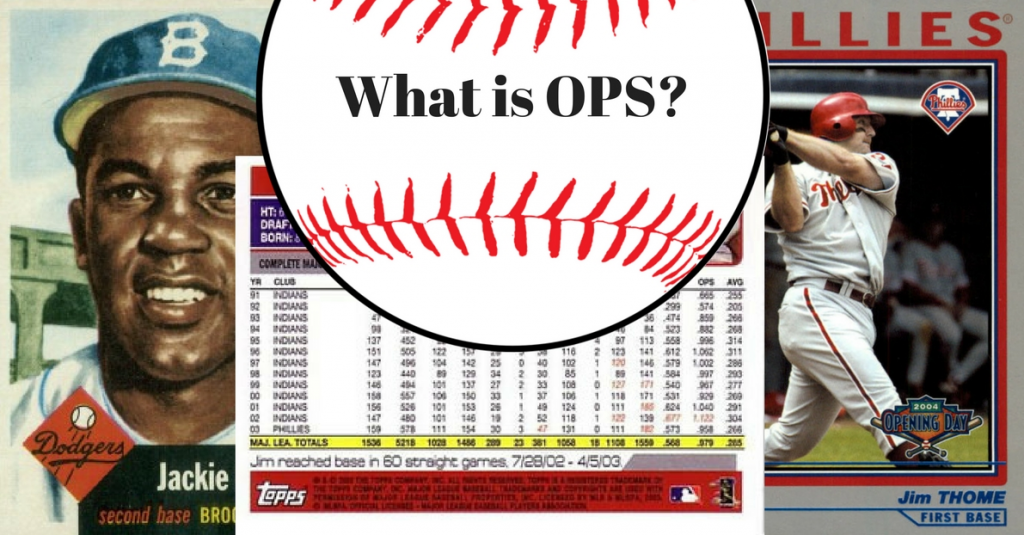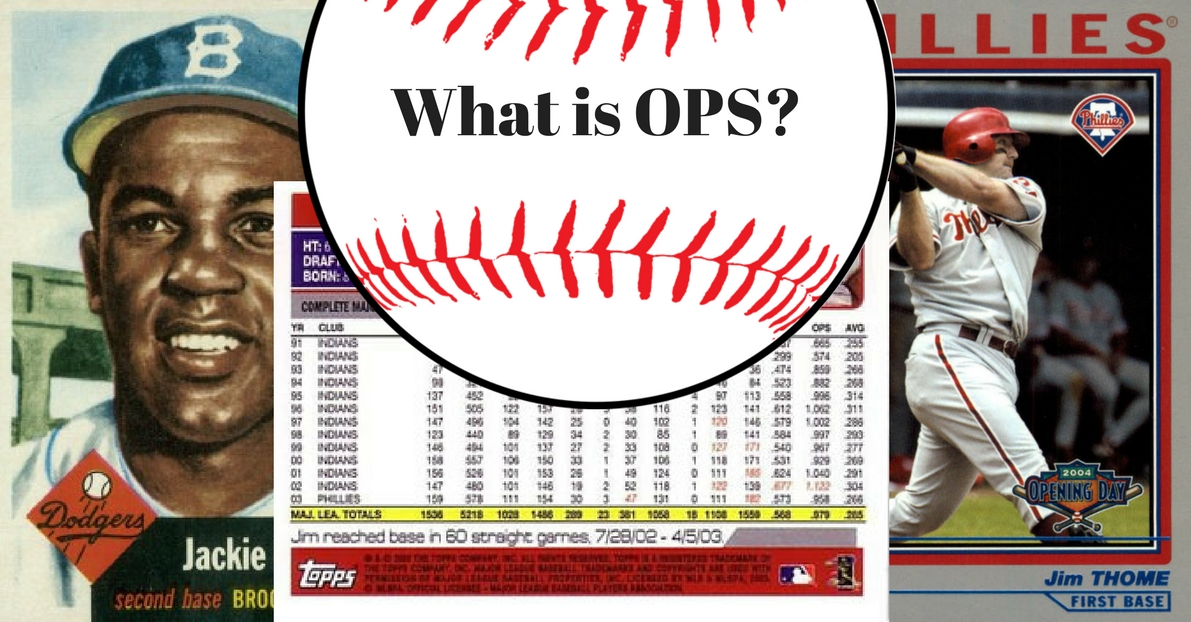What does OPS mean in baseball? The ultimate sport for math nerds maybe baseball. OPS, for example, includes formulas from other statistics, which makes it very interesting. While it might sound complicated, the result is clear:
calculating OPS, or on-base plus slugging, can be a quick way to determine a player’s actual value to a team. Here is everything you need to know about the unique baseball statistic known as OPS.

Table of Contents
How is OPS Calculated?
OPS is one of those statistics that needs other statistics to make sense. In order to calculate On-base plus Slugging, we’ll need two statistics:
- On-base percentage (OBP). On-base percentage is a cold, concrete statistic: how many times does a player get on base through any means, compared to their total at-bats? When it comes to OBP, it doesn’t matter how the player got on base. Were they beaten? Walked? Did they hit? It all fits into their OBP.
- Slugging average (SLG). The quality of a player’s hits is determined by this formula, which is rare in baseball. For example, a player’s batting average doesn’t tell you what they hit, only that they scored an impact at a specific rate. Based on the number of bases achieved, SLG incorporates the quality of those hits into the calculation. It is theoretically possible for a player to have a slugging average of 4.000, which means a perfectly balanced ratio between home runs and at-bats. A slugging average of 4.000 is achieved when a player has one at-bat and hits a home run. An SLG of 1.000 signifies hitting a single in one at-bat, etc.
Exceptional circumstances, like sacrifice flies, do not count toward at-bats, so they do not have a significant impact on these two statistics. You’ll probably recognize that OBP measures rate, while SLG measures rate and quality. Combined with slugging, on-base plus slugging gives a complete picture of a player’s ability to hit. How is it calculated? Add the two together.
What are good OPS in baseball?
Major League Baseball fans sometimes find it difficult to understand how OPS works. What does it say about plate appearances? What is the quality of the ballpark in which they are hitting? The total bases they’ve hit?
In order to fully understand what a successful OPS is, it is first important to establish a standard. Here are some of the greatest OPS in MLB history:
- Babe Ruth, mainly of the New York Yankees, holds the all-time lead with an OPS of 1.1636.
- Mike Trout is among the all-time OPS greats still playing, with a career average of around 1.0000.
- Barry Bonds scores 4th on the list as of 2020, with approximately 1.05.
- Lou Gehrig ranks 1.07, good for third. Besides Babe Ruth, Ted Williams is the only player outside of him with a career OPS of 1.1 or higher. At least three thousand at-bats are needed to qualify.
We have only seen one end of the spectrum, of course. What about the league average? On the basis of MLB’s statistics, the league average for on-base plus slugging ranges between 0.700 and 0.800.
What is the highest OPS in baseball history?
Previously, we showed you Babe Ruth’s career OPS, which is the highest of all time. A 1.1636 OPS over that many at-bats may never be surpassed, making him the greatest hitter of all time. However, that’s only one way to look at the metrics. OPS and other metrics also deserve to be examined season by season, as they show just how extraordinarily some players have risen in their careers.
- Barry Bonds, 2004: 1.4217
- Barry Bonds, 2002: 1.3807
- Babe Ruth, 1920: 1.3791
- Barry Bonds, 2001: 1.3785
- Babe Ruth, 1921: 1.3586
- Babe Ruth, 1923: 1.3089
With a season OPS of 7th in all time, Ted Williams joins the picture. A fourth player isn’t included on the list until the 13th spot, Rogers Hornsby.
What about High OPS Seasons in Recent Years?
- Juan Soto batted 1.1846 OPS in 2020 for the Washington Nationals, who had the highest OPS. The 25th best OPS season of all time came from that season.
- Christian Yelich of the Milwaukee Brewers hit 1.1001 to rank among the top 100 OPS seasons of all time in 2019.
Are there Better Stats than OPS?
A hitter’s talent can be evaluated crudely by adding their slugging percentage or slugging average to their on-base percentage. But there may be more that factors into it than you think.
Ultimately, OBP takes into account at-bats, walks, sacrifice flies, and pitch hits. Overall, the statistic of OPS takes a lot into accounts, such as at-bats and total bases. The overall formula includes hits, walks, HBP, and even sacrifice flies.
People like OPS because when you calculate it for an entire team, it correlates with how many runs that team has scored. Because of this, many people believe it is an excellent way to evaluate a hitter’s offensive production.
What about OPS+?
Also, there is OPS+, which takes this statistic and “normalizes” it across all leagues. OPS+ considers external factors such as the ballpark hitting a player. Based on this measurement curve, the league average is 100. It allows people to see an immediate comparison of the offensive production of players across the entire league.
For this reason, a Cubs player’s statistics might look different from a Dodgers player, who might look other from a Cardinals player or a White Sox player. A player’s OPS with the “+” at the end seeks to even the playing field. The OPS+ is significant during free agency because a player may benefit from playing in a smaller ballpark where home runs are more likely.
FAQs
OPS adds on-base and slugging percentages to get one number that unites the two. It’s meant to combine how well a hitter can reach base with how well he can hit for average and for power.
Divide the total number of hits, walks, and pitches hit by the number of times at bat plus walks, sacrifice flies, and pitches hit by the player’s OBP.
Babe Ruth is the all-time leader with a career of 1.1636 OPS.
Conclusion
On-base average and slugging percentage can be combined to gain insight into a player’s offensive performance. With baseball sabermetrics, it’s not always easy to measure everything without seeing it for yourself.

